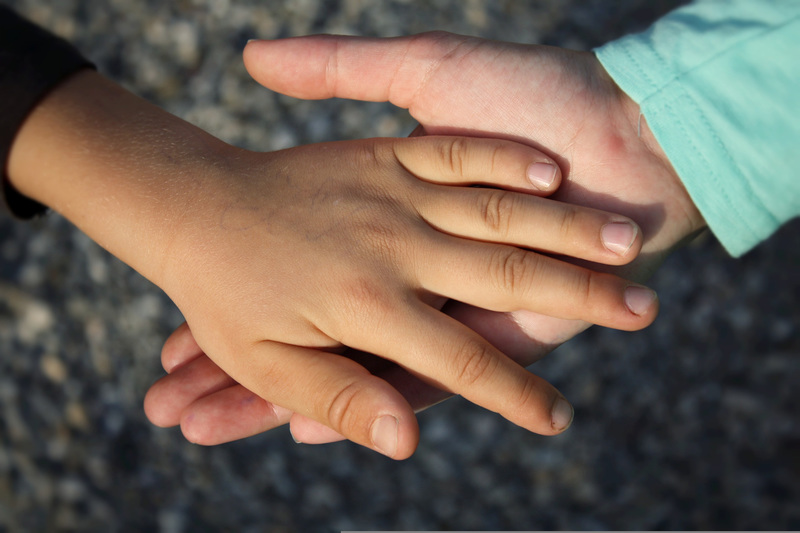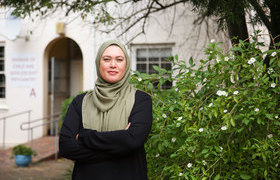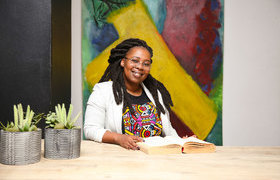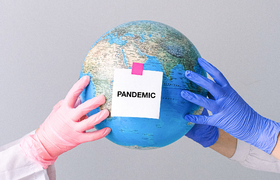Thirty years of freedom: Protecting South Africa’s children
24 May 2024 | Story Niémah Davids. Photo Pixabay. Read time 8 min.
It’s human inclination to protect every child from violence, exploitation, neglect, and other forms of physical, psychological, and sexual abuse – at all costs. Yet, the perpetual scourge of violence against children in South Africa remains rampant and is often too harrowing to comprehend.
However, protecting children has always been paramount in South Africa. Since the advent of democracy, the government introduced crucial legislations like the Children’s Act to safeguard this vulnerable sector of society. Although strong on paper, this legislation (in practice) has failed to adequately protect children over the last three decades.
This is according to Lucy Jamieson, a senior researcher at the University of Cape Town’s (UCT) Children’s Institute. Jamieson’s research focuses on child rights, participatory democracy, policy development and child protection. As the country observes Child Protection Week on 29 May to 5 June, UCT News spoke to Jamieson about what needs to be done to protect the nation’s children.
“Unfortunately, South Africa is not doing well in terms of child protection. Violence against children is widespread and despite progressive changes in legal frameworks over the years, we can’t seem to break that intergenerational cycle of violence,” Jamieson said.
Alarming statistics
A study on child maltreatment, commissioned by the UBS Optimus Foundation – a grant-making foundation, revealed startling results. The report, which provided a national overview of the prevalence of child abuse, violence, and neglect in South Africa, found that 42% of children experienced some level of violence during their childhood. Further, the report indicated that in 2015 alone, roughly 355 000 cases of sexual abuse were perpetuated against children between the ages of 15 and 17.
Sadly, Jamieson said, some communities’ statistics are far worse, and the Birth to Twenty study – Africa’s largest and longest-running study of child and adolescent health and development – proved this. The longitudinal cohort study conducted in Soweto showed that 99% of all children there had been exposed to at least one form of violence by the time they turned 18, and roughly a third of those children experienced six forms of violence or more.
“These are alarming statistics and demonstrate that we are not nearly where we need to be when it comes to protecting our children.”
“These are alarming statistics and demonstrate that we are not nearly where we need to be when it comes to protecting our children. There are also new threats in the digital space that we cannot yet fully quantify,” Jamieson said.
“Another weakness in the country’s protection system is the failure to establish a proper surveillance system that would gather data on a regular basis to help monitor progress and target hotspots.”
Failure to launch
Academics and civil society had high hopes that once implemented, the Children’s Act would provide the protection millions of children in the country so desperately needed. But despite the law, it’s been much harder to achieve.
“The Children’s Act held great promise, but under-investment resulted in a failure to build the base of prevention programmes that would have stopped children from experiencing violence. Again, these progressive changes in legal frameworks have not been accompanied by changes in behaviour on the ground,” Jamieson said.
Corporal punishment is a case in point. Although it was banned in the education system shortly after the dawn of democracy in 1996, Jamieson said, a report released by Statistics South Africa in 2023 revealed that more than one million children experienced some form of violence (related to corporal punishment) in school in 2019 alone.
“So, the culture of violence has still not changed significantly. While corporal punishment is banned in South Africa, most teachers have never been trained to adequately manage their classrooms and so a culture of violence permeates many schools and communities,” she said.
Solid progress
Over the past three decades, Jamieson acknowledged that some work has been done to keep South African children safe. This included implementing new, progressive laws and policies that prioritise their overall well-being, and developing specialised programmes that train social workers and child and youth care workers to aptly support vulnerable children and families in need.
But the latter, Jamieson added, has also fallen by the wayside.
“Thanks to budget freezes and austerity measures instituted by government over the last couple of years, child protection services have been deprived of the resources they need to sustain programmes that could potentially reduce the burden of violence against children,” she said.
“Several interventions, such as One Man Can, Skhokho, and Sinovuyo, have been developed and have proven effective, but we don’t have the resources to take these programmes to scale in South Africa.”
Community mobilisation
As government, civil society and non-governmental organisations work tirelessly to break the scourge of violence against children, Jamieson said community members also play a crucial role in ensuring that children are kept out of harm’s way.
This, she said, means weaving a safety net that involves watching over children as they play in local parks, walking them home from school in the afternoon when their parents are at work, and organising sporting events to keep them off the streets on weekends and during school holidays.
“Community members understand that child protection goes beyond reporting incidences and that everyone has a shared responsibility when it comes to the safety and well-being of our children. This takes many shapes and forms and requires that we work together to protect SA’s most vulnerable,” she said.
The role of academia
Finally, Jamieson said, the role of higher education institutions and academia cannot be underestimated. She said institutions of learning, like UCT, are responsible for capacitating the workforce and ensuring that all professionals who work with children receive proper training – to work in non-violent ways, identify the signs of abuse and to steer children towards the correct supportive services.
“If we continue to normalise violence and starve child protection services of the resources they need to prevent violence and change social norms, the cycle of violence against children will continue.”
She advised academics to continue to monitor the extent of this monumental problem and plug critical knowledge gaps by developing methodologies that are appropriate for research projects on children who have been abused. This, Jamieson added, requires sharp minds and innovative and critical thinking. In addition, she said, researchers also have a responsibility to ensure that their work translates into better practice, whether through prevention or response services or getting relevant information into the hands of children, parents and community members.
“We know more today than ever before about how to prevent violence. But it requires investment in a range of services from parenting and gender transformative programmes, right down to culturally sensitive response services,” she said.
“And if we continue to normalise violence and starve child protection services of the resources they need to prevent violence and change social norms, the cycle of violence against children will continue.”
 This work is licensed under a Creative Commons Attribution-NoDerivatives 4.0 International License.
This work is licensed under a Creative Commons Attribution-NoDerivatives 4.0 International License.
Please view the republishing articles page for more information.










